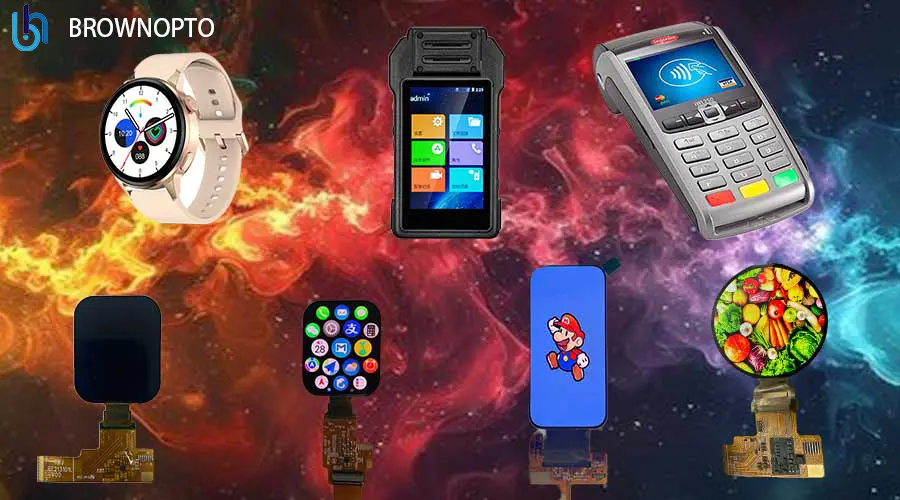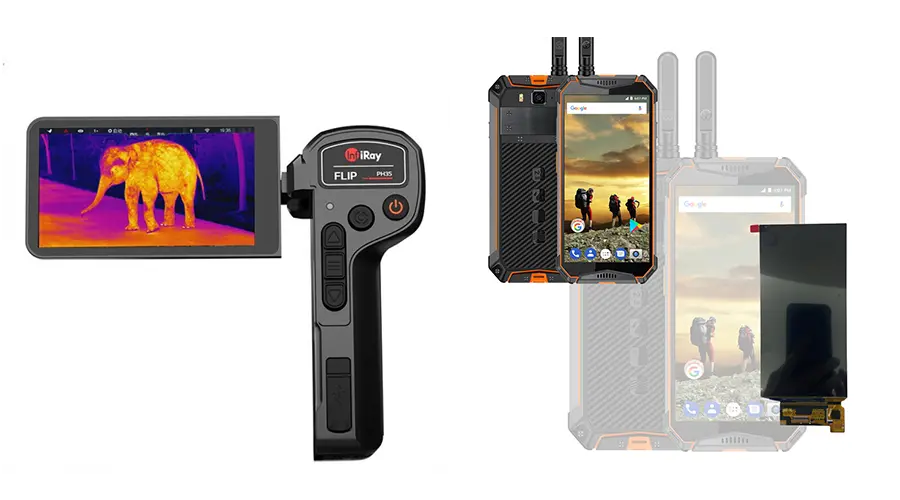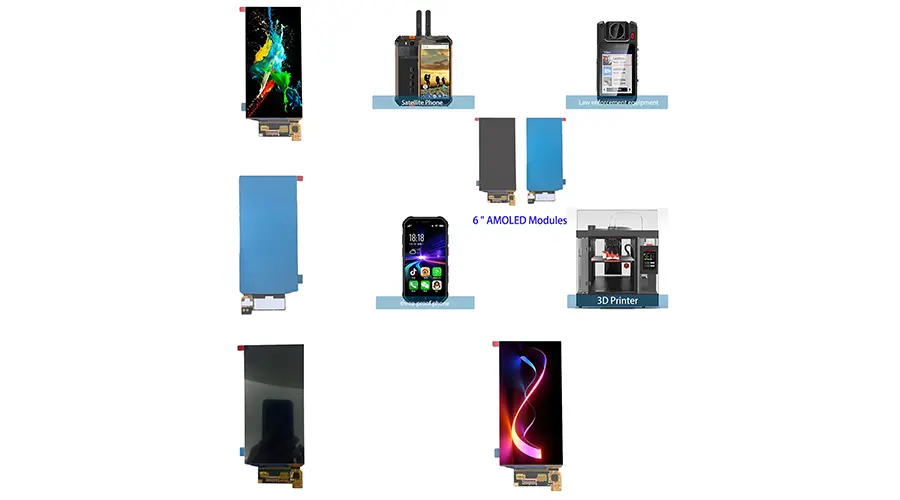A BROWNOPTO Engineering Case Study with MedTech Innovations Inc.
Cliente: MedTech Innovations Inc. — a U.S.-based innovator in point-of-care (POC) diagnostic systems
Application: Portable Blood Chemistry Analyzer for Emergency & Rural Healthcare
BROWNOPTO Product: Custom 4.40" On-Cell Touch LTPS AMOLED Display Module (Model: BR440102-A1)
Interface: MIPI DSI 2-lane, 60Hz refresh rate
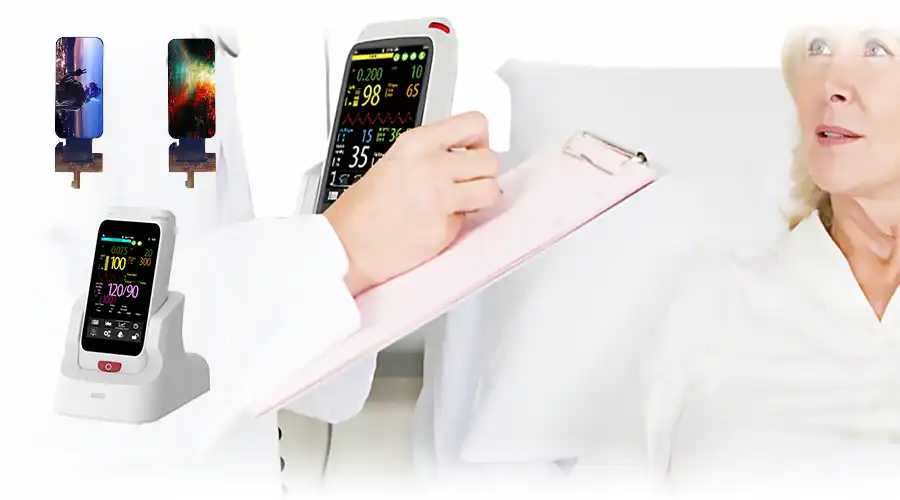
Project Background & Technical Challenges
MedTech Innovations sought to replace the legacy LCD in its flagship handheld blood analyzer with a next-generation display that could meet the stringent demands of clinical and field environments. The device is used by paramedics, lab technicians, and rural health workers—often in uncontrolled lighting, temperature, and humidity conditions.
Os principais requisitos de exibição incluíam:
Legibilidade sob luz solar:Brilho mínimo de 600 nits com tratamento antirreflexo (AR) para garantir a legibilidade sob luz solar direta (≥100.000 lux).
Robustez ambiental:Operação estável em temperaturas ambientes de -20°C a +70°C e umidade relativa de 95% (sem condensação).
Fatores humanos:Tecnologia capacitiva sensível ao toque, compatível com luvas, com rejeição de dedos molhados e baixa latência (<20 ms).
Formato:Espessura do módulo ≤0,8 mm para permitir um chassi portátil mais fino e ergonômico.
Conformidade regulamentar:Total conformidade com as normas RoHS 2.0 (2015/863/UE), REACH (SVHC < 0,1%) e com os padrões de materiais livres de halogênio (HF) para equipamentos médicos.
Confiabilidade a longo prazo:Mais de 50.000 horas de vida útil com degradação mínima da luminância.
Os painéis AMOLED disponíveis no mercado não atendiam aos requisitos de durabilidade mecânica e consistência óptica para dispositivos médicos de Classe II. A MedTech precisava de um parceiro de displays capaz de codesenvolvê-los, e não apenas de fornecê-los.
Solução de tela AMOLED desenvolvida em conjunto pela BROWNOPTO
A BROWNOPTO participou de um programa de desenvolvimento conjunto de 6 meses com as equipes de hardware e firmware da MedTech. A colaboração abrangeu design óptico, integração mecânica, validação elétrica e documentação regulatória.
Os principais marcos de engenharia incluíram:
Otimização da pilha óptica:Integração de um polarizador híbrido HC (Hard Coat) + AR para reduzir a refletância da superfície para <1,5%, mantendo a resistência a riscos (dureza de lápis ≥3H).
Integração de toque na célula:Ajuste personalizado do firmware do controlador de toque CST3530 para suportar entrada de dedos com luvas de 5 mm e rejeitar acionamentos falsos causados por umidade ou contato com a palma da mão.
Gestão térmica:Implementação de um FPC (Circuito Impresso Flexível) de baixa expansão térmica para evitar a delaminação durante ciclos térmicos.
Sequenciamento de potência:Projeto conjunto do sincronismo de inicialização/desligamento da tela com o PMIC da MedTech para eliminar a cintilação da tela durante a inicialização.
Calibração de cores:Calibração de gama e ponto branco realizada em fábrica (D65, gama 2.2) para garantir a renderização precisa de elementos da interface do usuário médica (por exemplo, ícones de aviso, gráficos de tendência).
Especificações técnicas
| Parâmetro | Especificação | Padrão de Validação |
|---|---|---|
| Tipo de exibição | 4,40" LTPS AMOLED | — |
| Área Ativa | 54,3 × 115,8 mm | — |
| Resolução | 568 × 1210 pixels (Full HD+) | Densidade de pixels: 296 PPI |
| Brilho | 600 nits (típico), 800 nits (pico) | Medido de acordo com a norma ISO 13406-2 |
| Taxa de contraste | 100.000:1 (típico) | Infinito em condições de escuridão |
| Tecnologia Touch | Capacitivo na célula (CI CST3530) | Suporta multitoque de 10 pontos |
| Ângulo de visão | ≥85° (em todas as direções) | ΔE < 5 a 80° |
| Espessura do módulo | 0,75 mm (excluindo FPC) | — |
| Interface | MIPI DSI de 2 pistas, 60 Hz | Em conformidade com a MIPI Alliance v1.3 |
| Temperatura de operação | -20°C a +70°C | IEC 60068-2-1 / -2-2 |
| Temperatura de armazenamento | -30°C a +80°C | — |
| Conformidade | RoHS 2.0, REACH, HF, ISO 10993-5 (teste de citotoxicidade) | Declaração completa dos materiais disponível |

Validation & Field Performance
O módulo BR440102-A1 passou por uma validação rigorosa nas instalações da BROWNOPTO e da MedTech:
Testes ambientais:Aprovado em ciclos de temperatura alta/baixa de 240 horas (-20°C ↔ +70°C) e exposição à umidade relativa de 95% por 96 horas, sem delaminação ou formação de mura.
Robustez mecânica:Sobreviveu a 3 quedas de 1,2 m sobre madeira compensada (de acordo com a norma IEC 60601-1-11) sem apresentar falhas funcionais.
Consistência óptica:Uniformidade de luminância >85% em todo o painel; variação de cor (Δu'v') < 0,01 sob variação do ângulo de visão.
Projeto piloto clínico:Implantado em 500 unidades em 12 agências de serviços médicos de emergência (EMS) dos EUA ao longo de 12 meses — zero falhas de campo relacionadas ao visor foram relatadas.
“A BROWNOPTO não se limitou a entregar um display — ela se integrou ao nosso processo de desenvolvimento de novos produtos. Sua equipe de engenharia resolveu problemas de ruído ao toque com os quais lutávamos há meses e garantiu que o AMOLED atendesse aos requisitos de documentação da FDA para rastreabilidade de materiais. Essa parceria foi fundamental para o lançamento do nosso produto.”
— Engenheiro Líder de Sistemas de Hardware, MedTech Innovations Inc.
Por que os displays AMOLED da BROWNOPTO se destacam em aplicações médicas
A abordagem da BROWNOPTO vai além do fornecimento de componentes. Oferecemos engenharia de displays completa para aplicações de missão crítica:
Design orientado para a aplicação:Monitores projetados para uso no mundo real — não apenas para especificações técnicas.
Integração vertical:Revestimento óptico interno, integração de tecnologia touchscreen e testes de confiabilidade.
Apoio regulatório:Documentação completa de conformidade de materiais (RoHS, REACH, HF, ISO 10993) para submissões de dispositivos médicos.
NPI escalável:Do protótipo à produção em massa com qualidade consistente (PPM < 50).
Apoio global:Equipes de engenharia na Ásia, América do Norte e Europa para resposta rápida.
Pronto para integrar um display AMOLED de alta confiabilidade em seu dispositivo médico, industrial ou de defesa?
Contate a BROWNOPTOPara uma consultoria personalizada de displays — projetados para alto desempenho, construídos para confiabilidade.
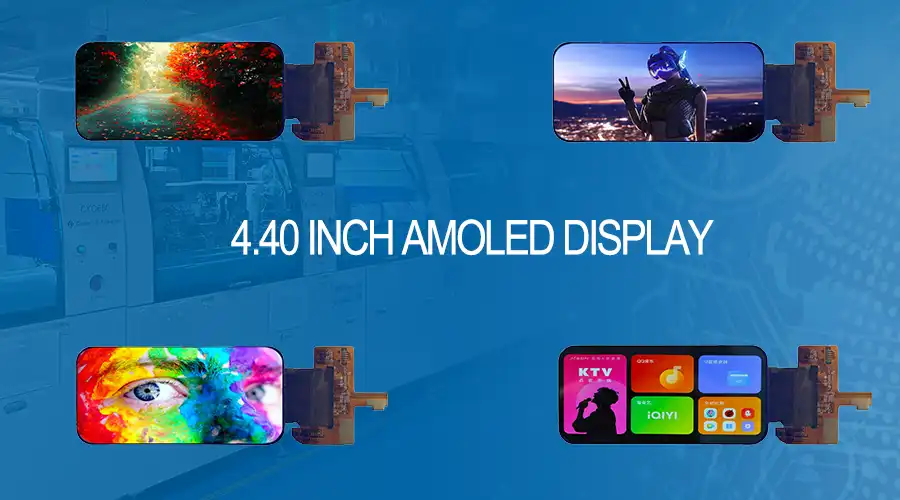
Perguntas frequentes
O que causa a queima de OLED e como ela pode ser evitada?
A queima ocorre quando materiais orgânicos se degradam de forma irregular devido à exibição prolongada de imagens estáticas. A prevenção inclui o uso de escurecimento automático, tempo limite de tela, deslocamento de pixels, escurecimento de logotipos e evitar brilho alto para conteúdo estático.
Os displays OLED são adequados para ambientes externos ou de alto brilho?
Os OLEDs padrão têm dificuldades com a luz solar direta devido ao brilho máximo limitado. No entanto, alguns modelos apresentam maior saída de nits e revestimentos antirreflexo. Para uso externo completo, considere Mini-LED ou variantes especializadas de OLED de alto brilho.
Quanto tempo os displays OLED costumam durar?
A vida útil do OLED é normalmente estimada em 30.000 a 100.000 horas até L50 (meio brilho). A vida útil depende dos padrões de uso, níveis de brilho e temperatura de operação. Os pixels azuis se degradam mais rapidamente, portanto, o equilíbrio de branco pode mudar com o tempo.
Os OLEDs podem ser usados em telas sempre ativas (AOD)?
Sim — OLEDs são ideais para AOD devido ao baixo consumo de energia ao exibir temas escuros ou ícones pequenos. Para reduzir o risco de burn-in, use posicionamento dinâmico, brilho baixo e limite os pixels ativos.
Qual é a diferença entre AMOLED e PMOLED?
O AMOLED (Active Matrix OLED) utiliza um painel traseiro TFT para atualização rápida e altas resoluções, ideal para smartphones e wearables. O PMOLED (Passive Matrix OLED) controla linhas/colunas diretamente, sendo adequado para telas menores e mais simples, com menor custo.
Os displays OLED suportam funcionalidade de toque?
Sim — a maioria dos módulos OLED integra camadas de toque capacitivas (PCAP) ou resistivas. OLEDs flexíveis costumam ser combinados com sensores de toque curvos para criar designs automotivos e vestíveis sem emendas.
Últimos artigos
-
Por que as telas AMOLED de 1 a 2 polegadas são essenciais para AR/XR em 2025
Por que as telas AMOLED de 1 a 2 polegadas estão se tornando essenciais no boom da AR/XR (Análise do setor para 2025)
-
Understanding OLED Display Technology: Principles, Performance & Applications
OLED (Organic Light Emitting Diode) displays are a class of self-emissive display technology in whic
-
From Wearables to AR Glasses – How OLED Displays Are Redefining Visual Experiences in 2025
By 2025, OLED (Organic Light-Emitting Diode) technology has transitioned from luxury smartphone disp
-
Displays LCD de barra esticada para varejo: aumente as vendas e o engajamento em supermercados
Descubra como os displays LCD de barra esticada melhoram o marketing nas prateleiras dos supermercados, impulsionam as vendas e reduzem
-
Stretched LCD Solutions for Restaurants and Hospitality Venues
Os LCDs esticados oferecem telas elegantes e de alto brilho, perfeitas para cardápios de restaurantes e serviços de hospitalidade

